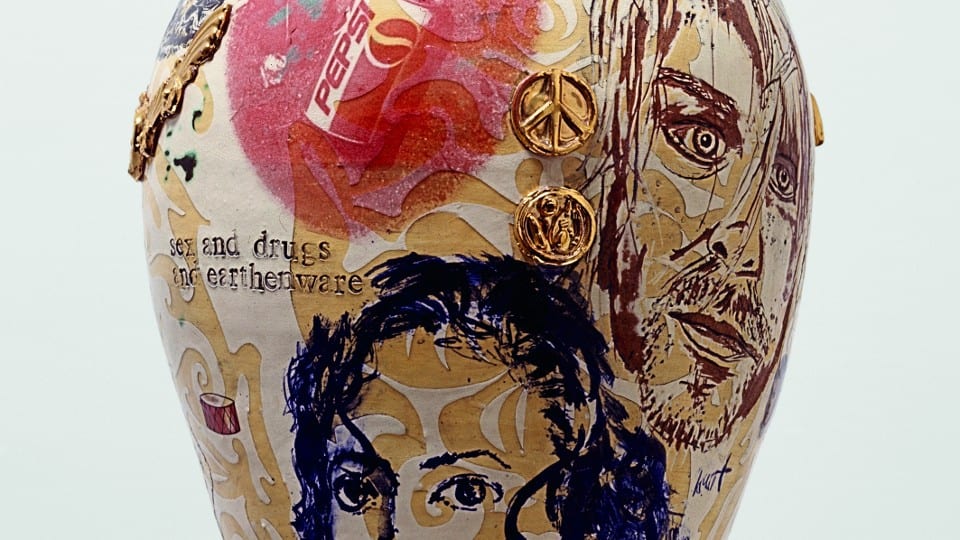Grayson Perry was the first transvestite potter to win the Turner Prize, and will probably hold that illustrious title for some time to come. He enacts fashionable contemporary critique in a distinctly unfashionable artform and aims for popularity in an artworld where popularity is scorned. In this Turner Contemporary show, which surveys his entire career from his earliest watercolours to his latest architectural project, he shows himself to be a complex, unflinching commentator on society and art. Art’s original provincial punk has certainly come of age, but has not grown tired or complacent.
The pots are so decorative and wear their craftsmanship as a badge of pride that it takes a careful second look to absorb the biting messages they convey. Some are designed formally, as if for use as ceremonial earthenware, while others are elaborate collages of drawings and photographs, but they are all replete with ideas. Every pot is both a story and a treatise on human nature, as are the tapestries which sprawl across the walls telling stories of living, consuming and dying to no apparent avail. Perry’s alter-ego, Claire, makes several delicious appearances: in a photograph with an X9 model airplane, in a video of her sunbathing in the garden and in a riotous watercolour collage where she is marrying Perry’s teddy bear, Alan Measles.
There are a few works here which many will not have seen before, adding equal measure resolution and mystique to the Grayson Perry legend. A collection of small pots from the 1980s that normally reside in Perry’s home are darker, more subdued than those we are accustomed to, dealing with themes of class war and Armageddon in much darker hues and with imagery that prefigures but does not yet achieve Perry’s distinctive drawing style. Also, a series of etchings that represent maps of class and gender concepts have the appearance of mediaeval relics but explore sharply contemporary concerns. These works are at once removed from what made Perry famous in that they are altogether more sober, but they contain the seeds of the social commentary which he has tirelessly promoted through his art and television shows.
Perry says that when he finished art school in the 80s the formalist wars were over, so you could do anything you liked, and he chose to resuscitate craft as a means of rebelling against the rebels. He wanted to respond to the bad boys and girls of contemporary art by making work which was both decorative and unashamedly popular. That is why he calls it ‘provincial punk’ – a rebellion in a low key with traditional ideas. The result of this, thirty years later, is a body of work that is so much fun one wonders how he has survived for so long in an art world otherwise so adverse to pure, unadulterated joy.
Daniel Barnes
Grayson Perry: Provincial Punk, until 13 Septemner, Turner Contemporary, Rendezvous, Margate, Kent, CT9 1HG.
Credits
1. Grayson Perry, Sex and Drugs and Earthernware (1995). Courtesy of the artist and Turner Contemporary.





